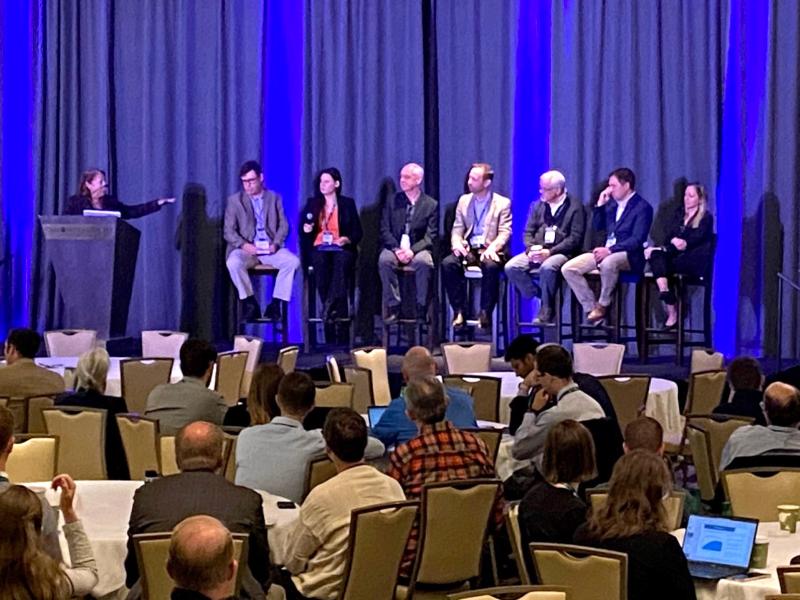
Land-Based Wind
Land-Based Wind
Finding solutions and
optimizing performance
Finding solutions and
optimizing performance
PNNL researchers work to address the remaining challenges the wind industry faces and optimize performance of existing wind farms.
Photo by Andrea Starr | Pacific Northwest National Laboratory
The United States has been using land-based wind turbines to generate renewable energy for decades. As a result of substantial funding from the Department of Energy (DOE) Wind Energy Technologies Office and the hard work of wind researchers across the DOE laboratory system, including Pacific Northwest National Laboratory (PNNL), the cost of wind power has drastically decreased over the years, enabling an increased development of large wind projects. In the United States, wind is now the top energy-producing renewable resource and the fourth-largest source of energy generation overall.
These significant strides are worth celebrating—but our work is far from done. There are still challenges for land-based wind energy, including inflation, interest rates, limited transmission infrastructure, and supply chain pressures, along with siting and permitting hurdles. PNNL researchers work to address the remaining challenges the wind industry faces and optimize performance of existing wind farms.
PNNL’s land-based wind research benefits from the expertise of researchers across its wind energy capabilities, including wind resource characterization, environmental monitoring and wind-wildlife interactions, wind systems integration, wind data management, and distributed wind.
Examples of key land-based, wind-related projects and technologies that PNNL leads and supports are:
- Wind Forecast Improvement Project–2
- The American WAKE experimeNt (AWAKEN)
- ThermalTracker-3D
- Radio-Frequency Transmitters for Detecting and 3-D Tracking Wildlife
- Wind Data Hub
- Distributed Wind Market Report
- Strategize, Engage, Network, Deploy Distributed Wind (SEND)
- Diverse and Equitable Workforce in Wind Energy (DEWWind)

